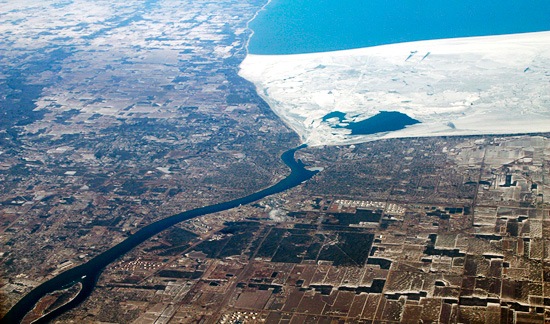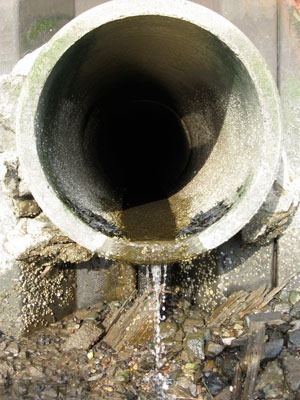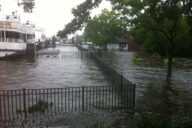Lake Michigan Water Levels Up
0Lake Michigan water levels are up more than four feet since January 2013, according to experts with the U.S. Army Corps of Engineers. The levels are nearing their highest in 18 years, when they peaked above average levels in mid 1998.
According to the Great Lakes Water Level Dashboard maintained by the National Oceanic and Atmospheric Administration (NOAA), those levels were just above 176 meters. Nowadays, Lake Michigan’s water levels are approaching similar heights. For July 2016, levels for Lakes Michigan-Huron are expected to possibly increase to 176.96 meters.

Lakes Michigan – Huron water levels projection for June 2016. (Credit: U.S. Army Corps of Engineers)
The effects of the rises have been broadly felt, with impacts to the lake’s aquatic inhabitants as well as the people who have built houses near the shore. Nearby beachgoers have been hit with closed beaches as waters have risen too high for officials to keep them open. And there is also the risk of shoreline erosion.
Though some of the effects have been negative, the shipping industry that relies on Lake Michigan for passage has largely benefited with higher waters supporting bigger and more loaded ships. Some say that every extra inch means ships can pack on another hundred tons of cargo.

Lake Michigan at Montague, Michigan. (Credit: Flickr User Kayoticblue via Creative Commons 2.0)
But what caused the waters to rebound so much since their most recent lows recorded in 2013? Generally, the lake’s water levels rise in the spring and decline by the same amount in the following fall. That didn’t happen in 2016, NOAA scientists say, because of less evaporation combining with a strong El Niño weather pattern and diminished runoff from winter snowfall.
Near the end of 2016, if Lake Michigan water levels decline at normal rates, experts expect that levels will still be slightly above average.
For information on water levels in other Great Lakes, see this posting from the U.S. Army Corps of Engineers.
Have you been affected by Lake Michigan’s surging water levels? Are there more upsides or downsides to more water in the great lake? Please consider leaving a comment to share your thoughts!













